The beautiful Upper Thames – from Windsor to Wallingford
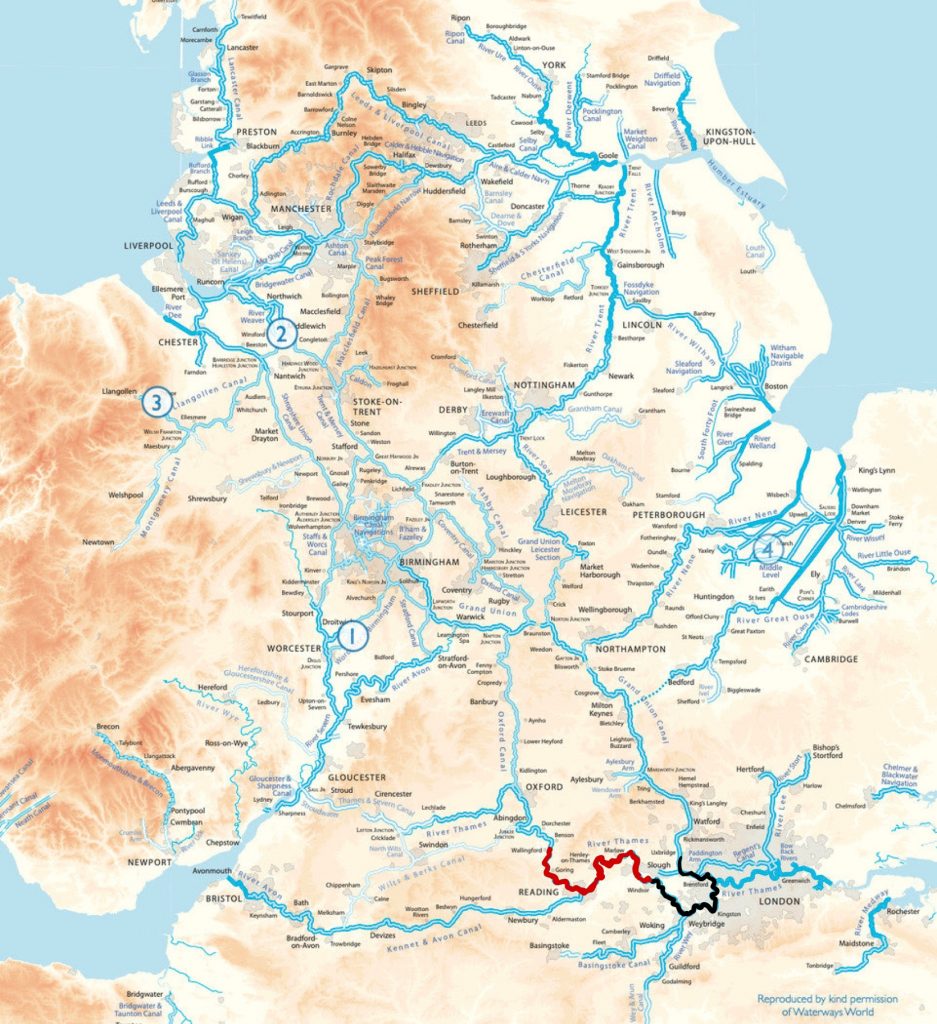
This post covers a long stretch of the Upper Thames from Windsor to Wallingford, a stretch characterised by varied countryside and picturesque towns.
Shortly after Windsor I arrived at a great mooring near the Olympic rowing lake at Dorney. There sure were a lot of competitive rowers on the river there. No signs for mooring restrictions amidst the waist high grass, which is a rare thing on the Thames. It is important for me to stay in one place for a few days, when I need to work, so this was ideal (apart from the hay fever potential).
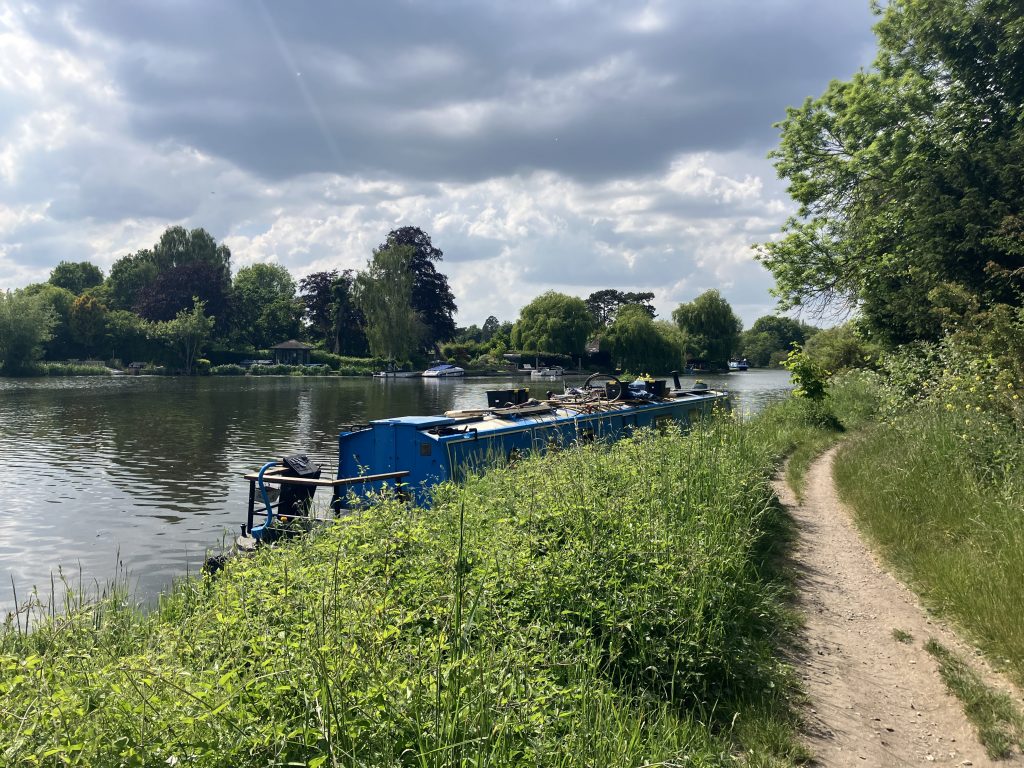
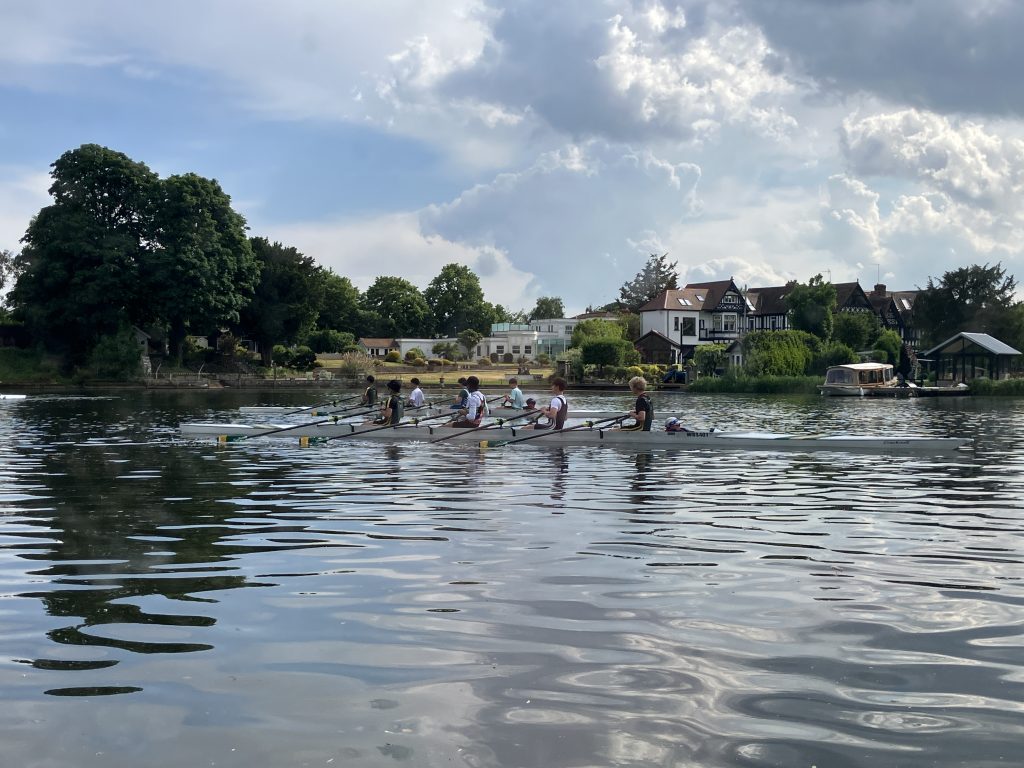
A little walk around the area led me to this ancient little church St. Mary’s all on its own in a field. It is owned by the “Friends of Friendless Churches“. How lovely is that!?
My walk was intended to lead me to Eton Wick, but the path through the field was completely water-logged at one point. How does this happen in the middle of all this dry weather?
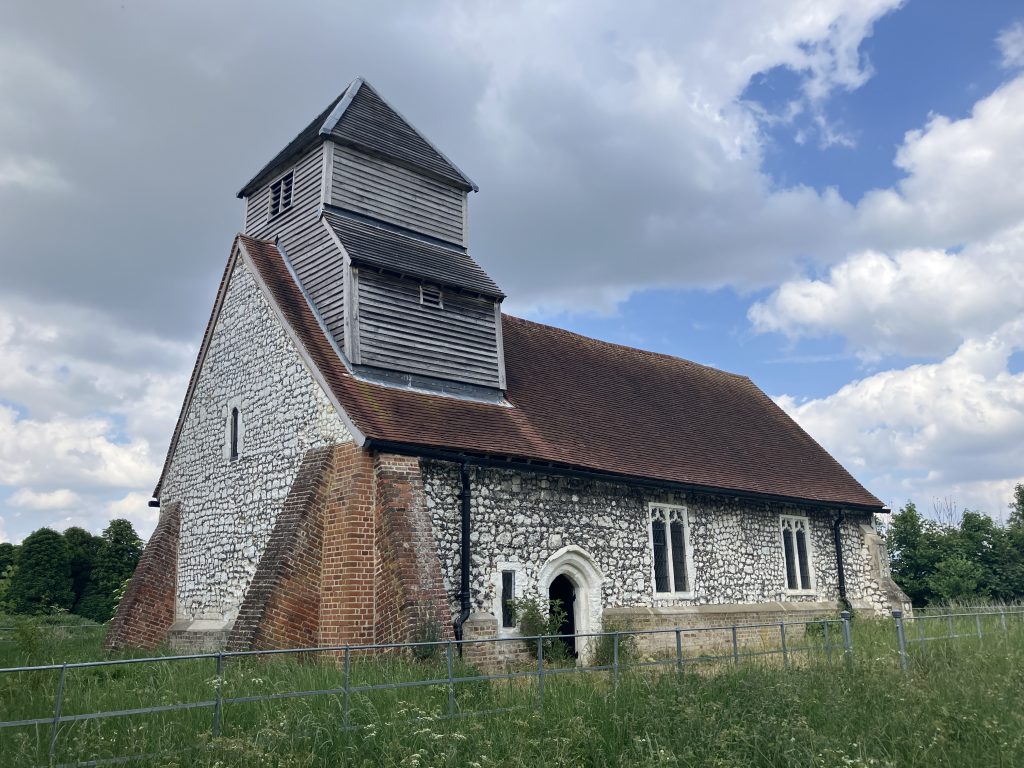
Moving on from this lovely mooring I set off for Cliveden, a must-stop on any Thames visit, passing Maidenhead along the way.
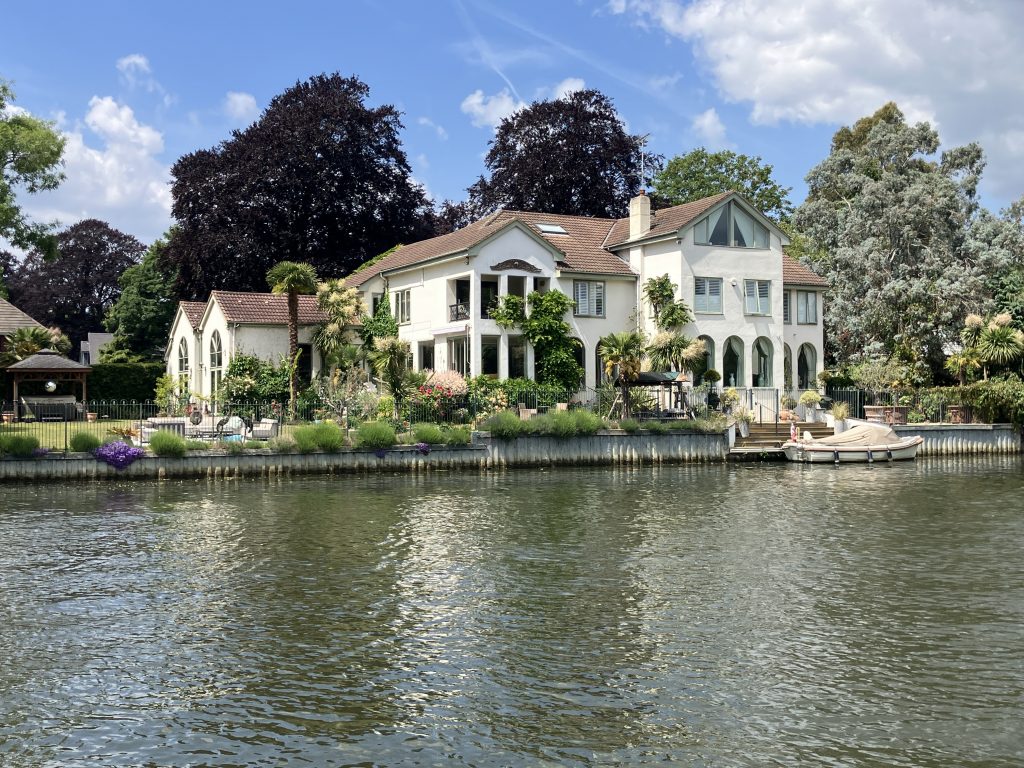
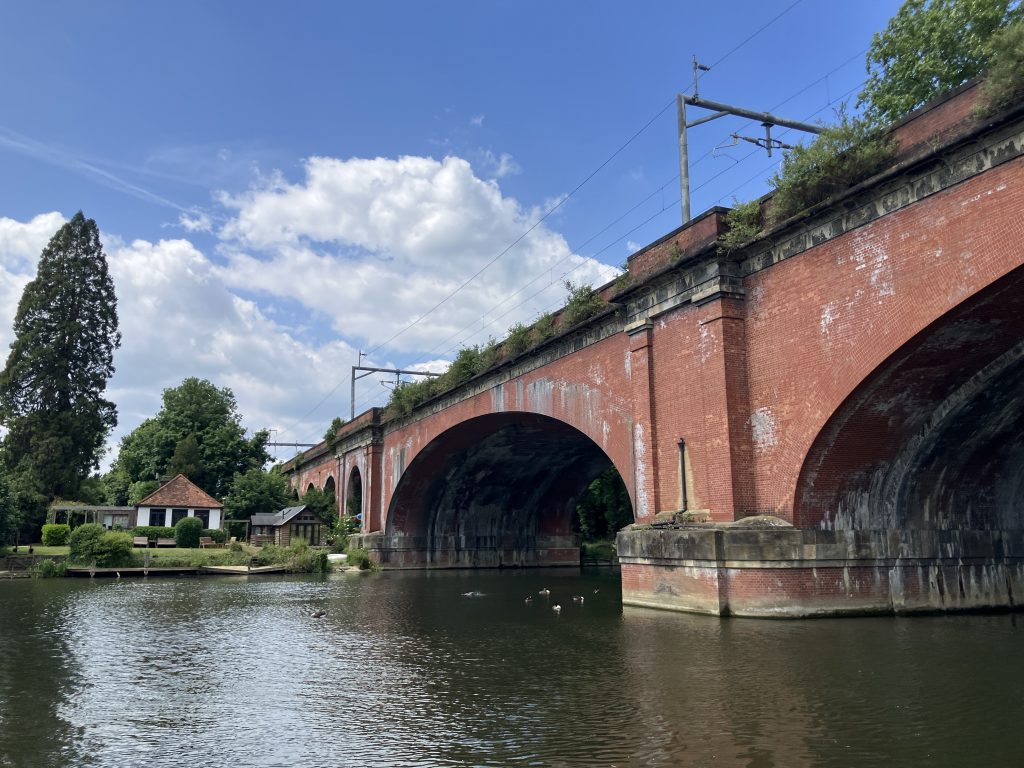
On the way I overtook a very slow narrowboat and was soon after overtaken by a big cruiser. No wave or thank you for the fact that I moved over to the trees to let them pass. Come the next lock and the lock keeper waited for all of us before letting us go up. Instant karma. It took at least 10 minutes until the slow narrowboat arrived as well. The elderly gentleman at the helm told me that they had come up the Thames from Limehouse, broke down in the middle of central London and had to be towed to safety by a life boat having to sacrifice their anchor in the situation. Eek! That would be my worst nightmare, but he was very “oh well, these things happen” about it.
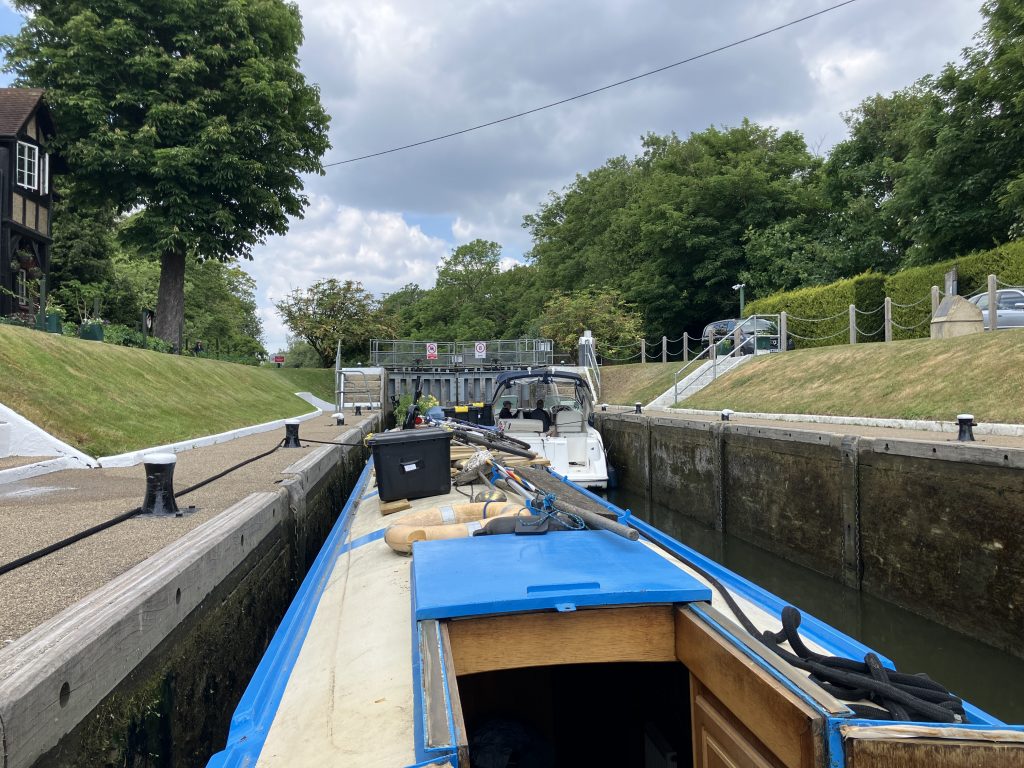
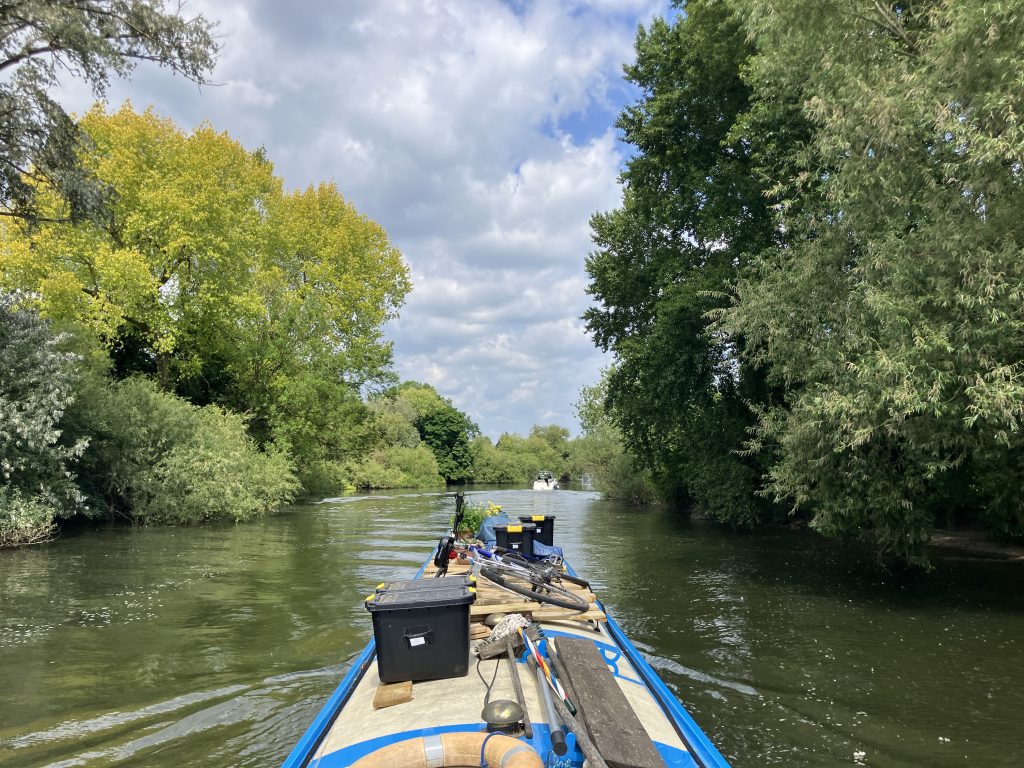
A bit further on I encountered a strange lock. Mostly Thames locks are operated by lock keepers. At times when they are not, they are usually switched to “public power”, which means when boaters press the buttons to open the sluices an automated sequence goes through several stages for safe operation. At Boulter’s lock near Maidenhead however there is no automated sequence. Boaters have to press the button to open the sluices a bit – wait 2 minutes – press again to raise the sluices more – wait 2 minutes – press again to raise sluices to full open position.
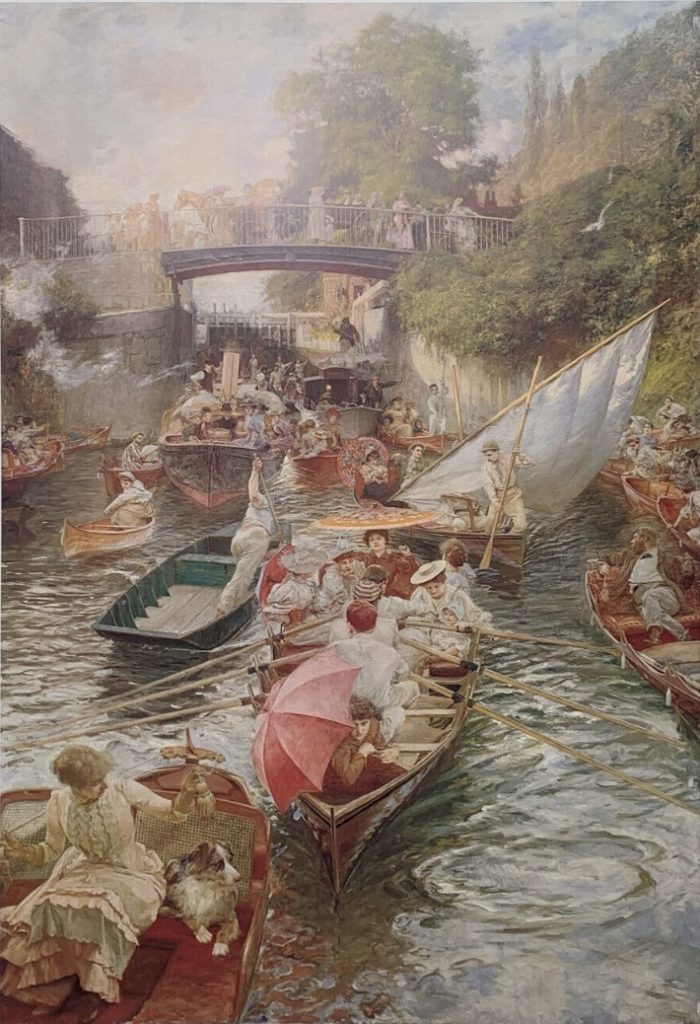
I was in the lock with the two elderly gentlemen on the narrowboat again and a different cruiser with a middle-aged couple. The cruiser people did nothing to help. One of the elderly gentlemen ran back and forth to the console to press the button and back to the boat to hold it in place. On the last lap I took over to press the button and had to really run back to pull my boat back in as it was drifting all over the lock. It was quite stressful. The cruiser people left without a thank you at the end.
This was all too stressful to take pictures, but here is a lovely Victorian painting of Boulter’s lock, which captures the atmosphere pretty well! (We certainly had a lot of people on the bridge watching us run back and forth too)
Then I arrived at Cliveden, which is probably my favourite place on the Thames. A National Trust property with a huge park on a steep cliff and a big manor house at the top (which is not accessible as it is a posh hotel now). The bank has little boat moorings for one boat each interspersed along the bank, which I just love. This time I opted to moor on one of the islands in the Thames instead. No access to the park, but very private. The island I opted for had one boat at the other end about 200m away, so it really did feel like my island.
The moorings at Cliveden are generally made more for cruisers that are half the length of my narrowboat. So mooring is always a little adventure with part of the boat in the bushes and tied up to trees. But with a little balancing and throwing ropes over to the bank (nobody there to catch a line, remember) it worked. I had a lovely time there even as the weather changed and it smelled amazing after the rain. I felt privileged being there.
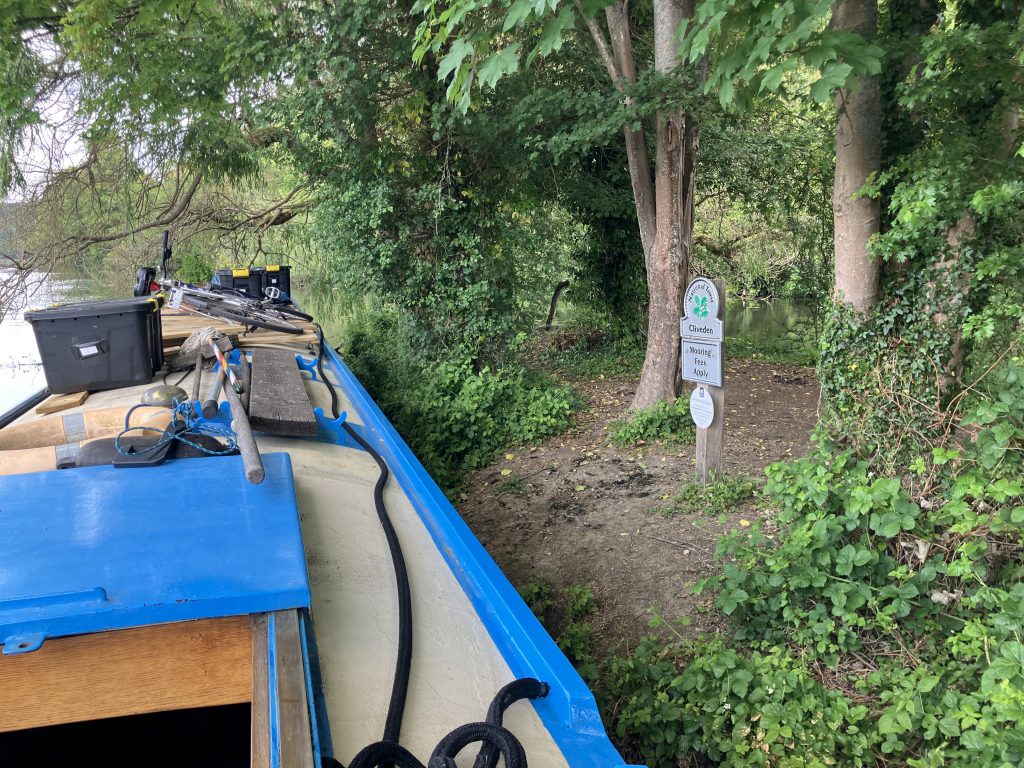
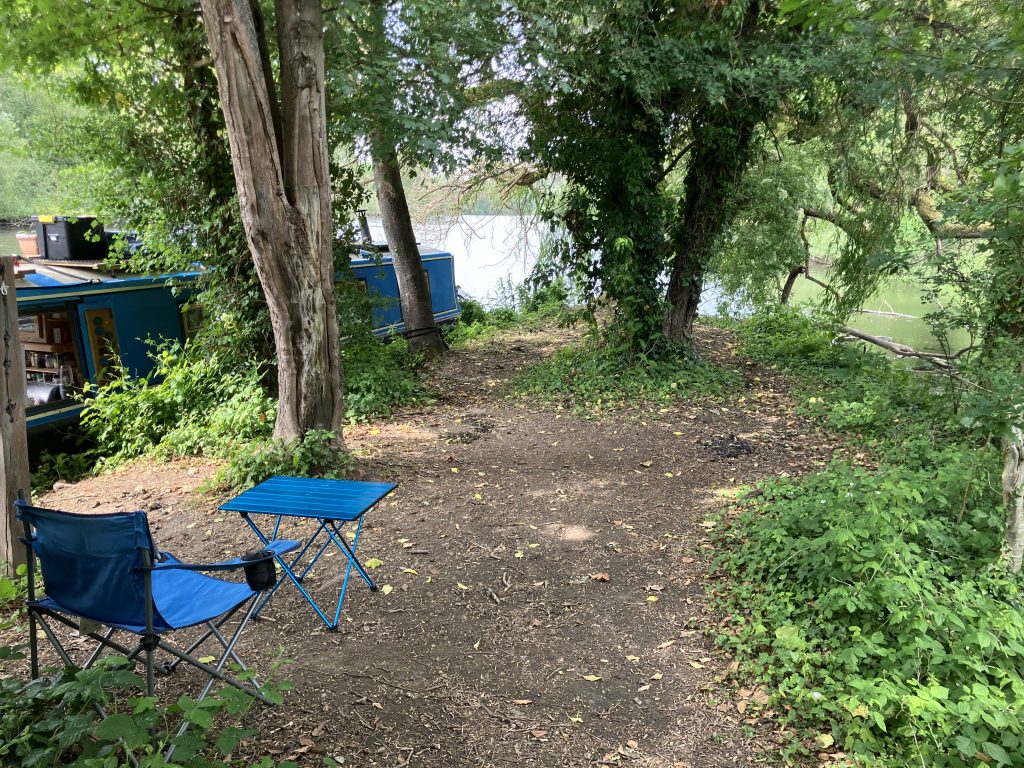
When I left Cliveden it was very windy with gusts of 30mph. On the canal this would be a reason to stay put as the boat just gets blown into the bank or other boats all the time. On the Thames it’s a bit easier as the river is wide, but it also means that the wind has a lot of space to pick up speed. When hit by a sideways gust, the boat rolls, quite a disconcerting experience!
A bit later near Cookham I had to navigate through a dinghy race. I remember the issues between motored boats going straight and sail boats zig-zagging in their path well from my sailing days in Hammersmith. This time I was on the other side of the match.
I tried to guess what the race course actually was, but there were too many buoys and frankly in the strong winds some boats were struggling to even keep upright. But I didn’t hit anybody (though I suspect some had to alter course a bit to avoid me). And amazingly nobody capsized. Great respect to these sailors!
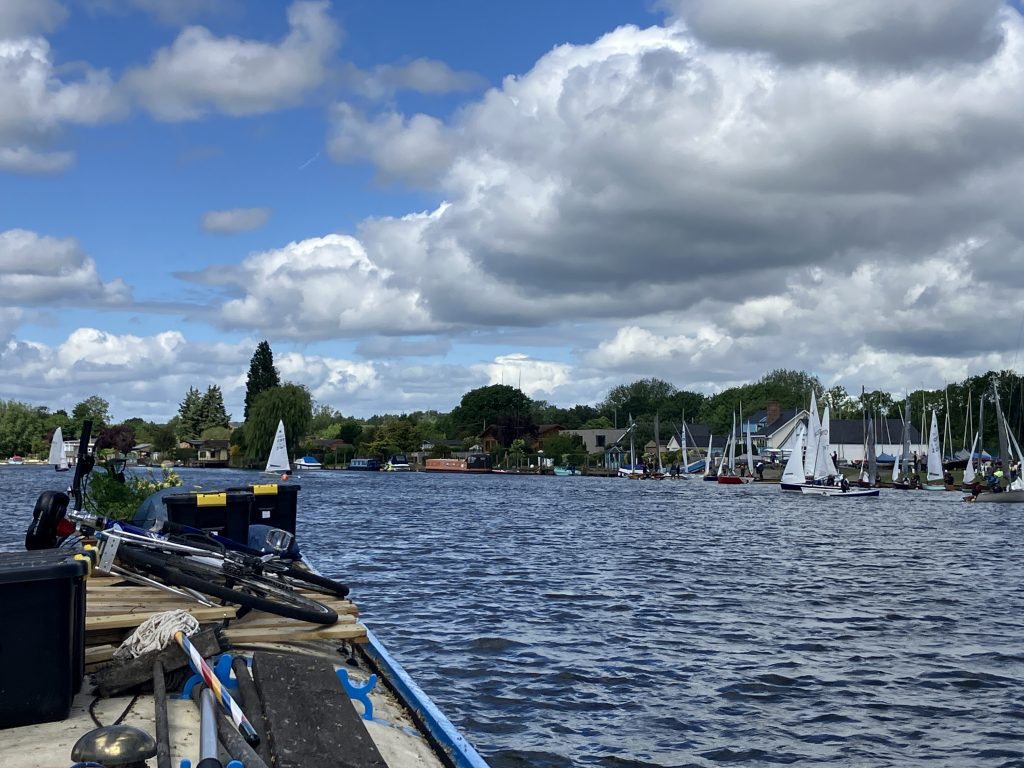
Next up was Marlow, one of the most beautiful (and most expensive) towns on the Thames. For the first time ever I got a mooring there and it was free for 24h!
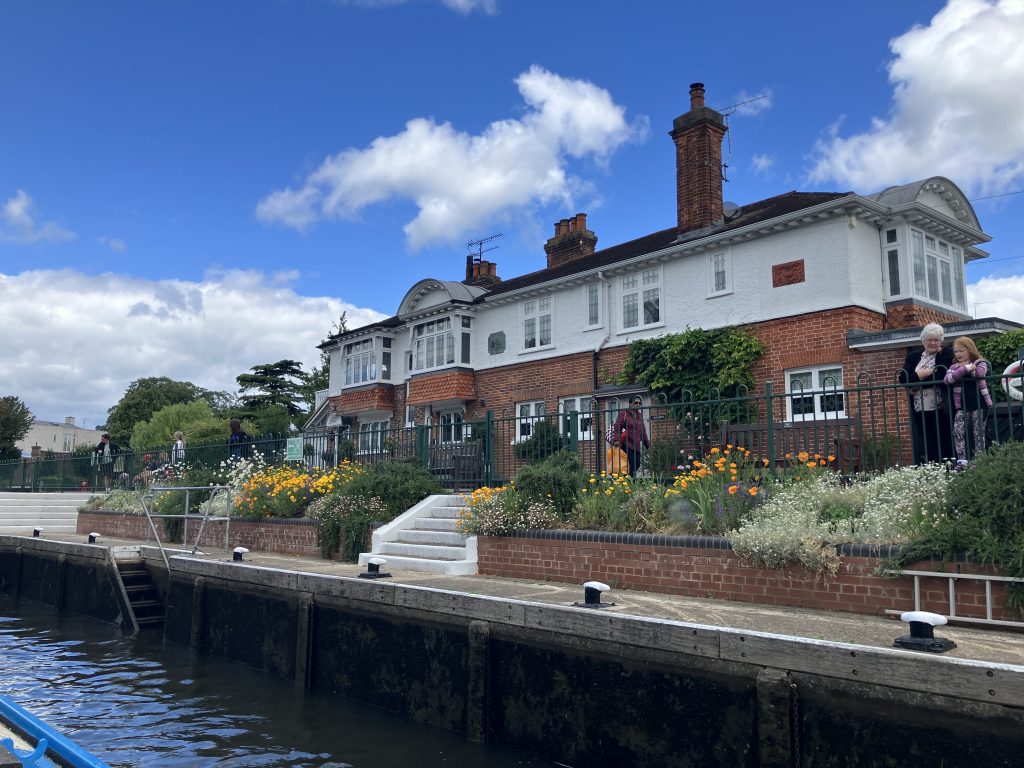
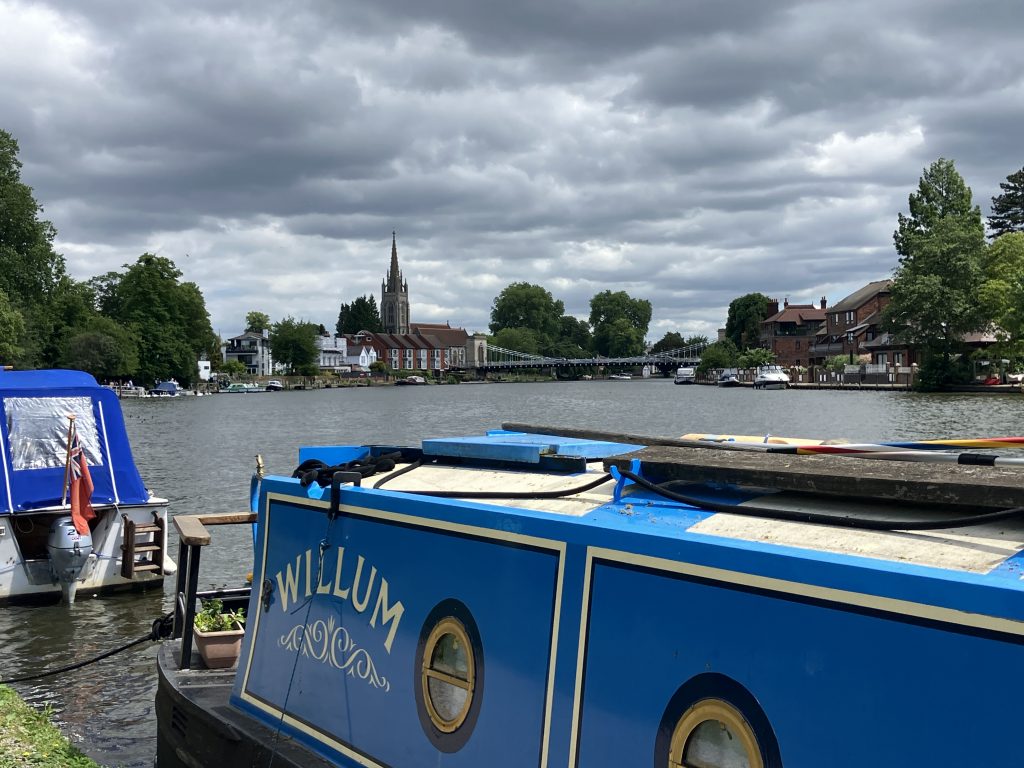
I cruised on the next day past Henley (another posh town) to Wargrave. The first lock (Temple) was on hand-wind. As mentioned before when there is no lock keeper usually the lock is on “public power”, which means boaters press the buttons to operate the lock. When there is no power however, a big wheel needs to be turned about 1000 times to operate the sluices and the gates manually. First thing in the morning, it was hard work fortunately shared with another boat. I called the emergency number to report the power fault and a guy arrived within 5 minutes to reset the power! And people say the Environment Agency is slow to respond to issues.
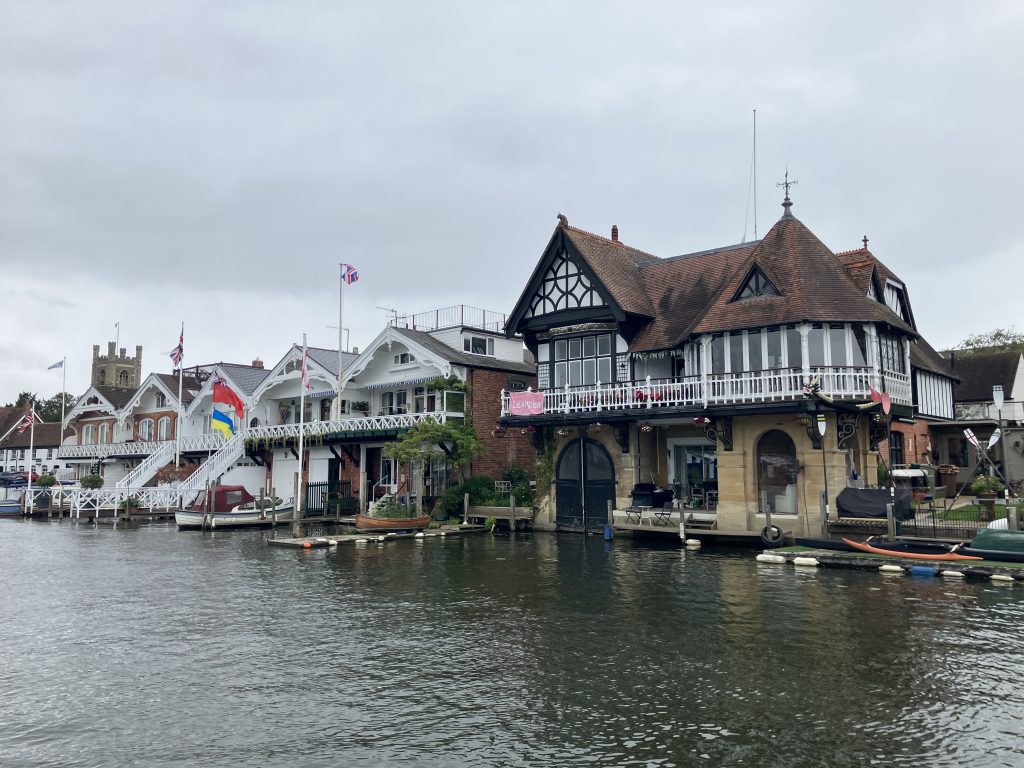
Henley is the place of the Royal Regatta of course and always looks geared up to host royalty. Lots of other regattas happen in Henley too and when I passed, the regatta course was cordoned off taking up about half of the river for a couple of miles up to the town itself. Lots of rowers training on the course and coming back past me on the side where the boats are going. It was quite challenging to keep track of them as they were so fast and came up from behind very quickly. I didn’t know where to look first to avoid all the traffic and regatta fences.
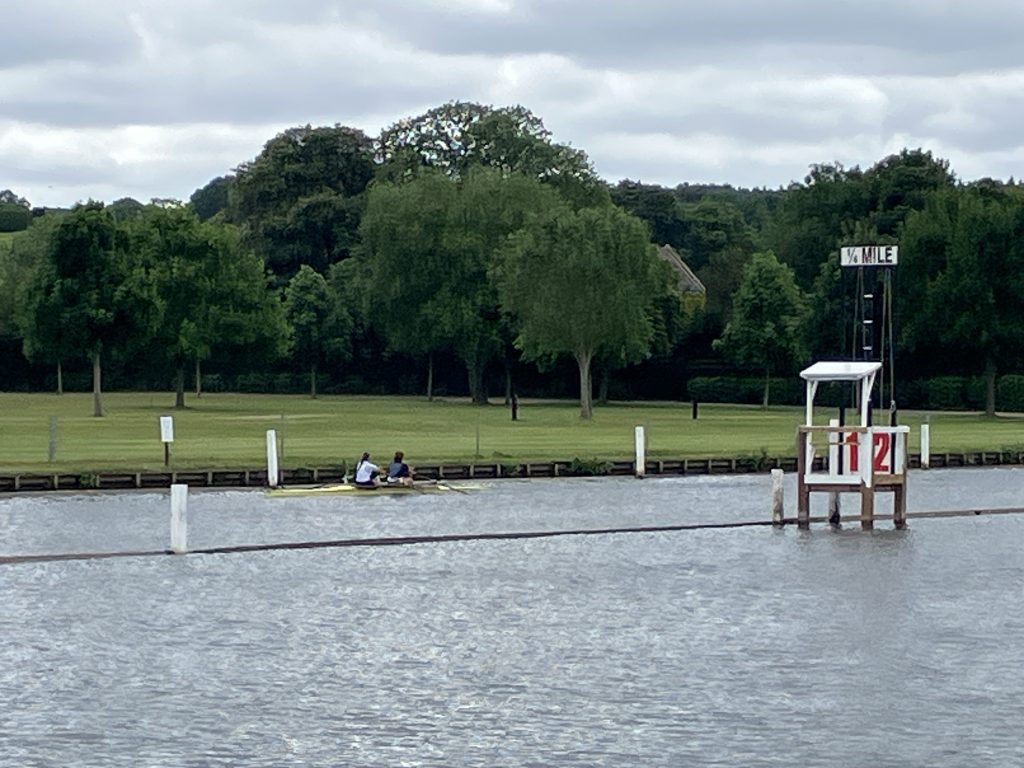
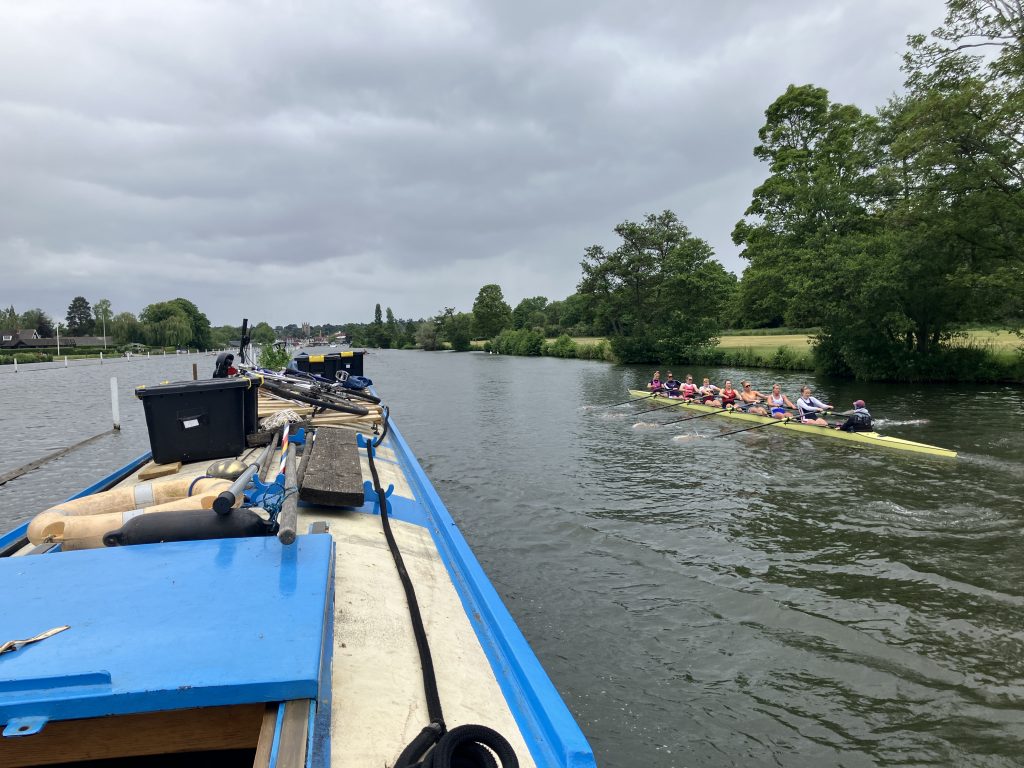
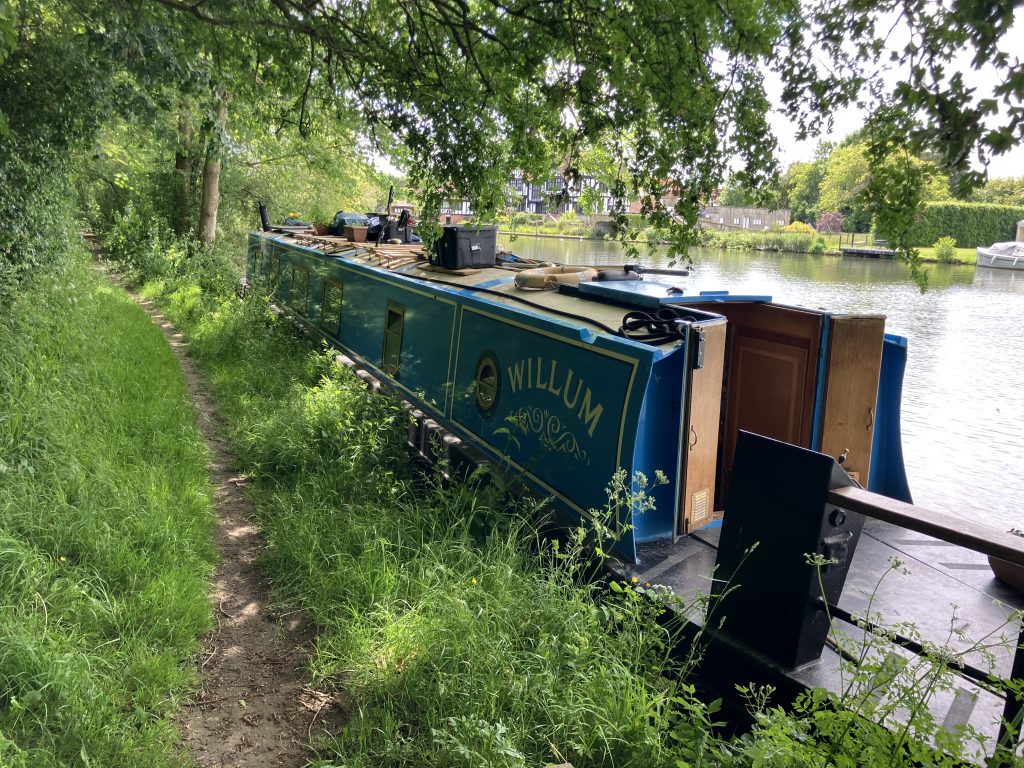
Mooring in Henley is expensive and it was time again to stay in place for a few days for work. But just a few miles upriver from Henley there is an oasis of calm that I had moored at before in Wargrave. The weather was turning and it was getting ever more windy and rainy over the next few days. The wind bashed me against something under the water line constantly, so it was not quite as calm as I had envisaged.
Fortunely the weather improved as I was setting off again. I had planned to stay overnight in Reading to do some shopping, but this proved impossible. Reading is really not boat-friendly despite having several river arms and the Kennet & Avon Canal. The few moorings in town were all taken and I had to continue on for another 1.5h as there was absolutely nowhere to moor. I ended up staying on a lock landing overnight and setting off very early again.
The next destination was Goring. The stretch between Pangbourne and Goring is one of the most scenic as the Chiltern hills close in on the river and it goes through the Goring Gap at the Western end of the Chilterns. This is one reason why I like going to the Midlands via Thames rather than Grand Union canal. The Grand Union goes over the Chilterns, whereas the Thames goes largely around.
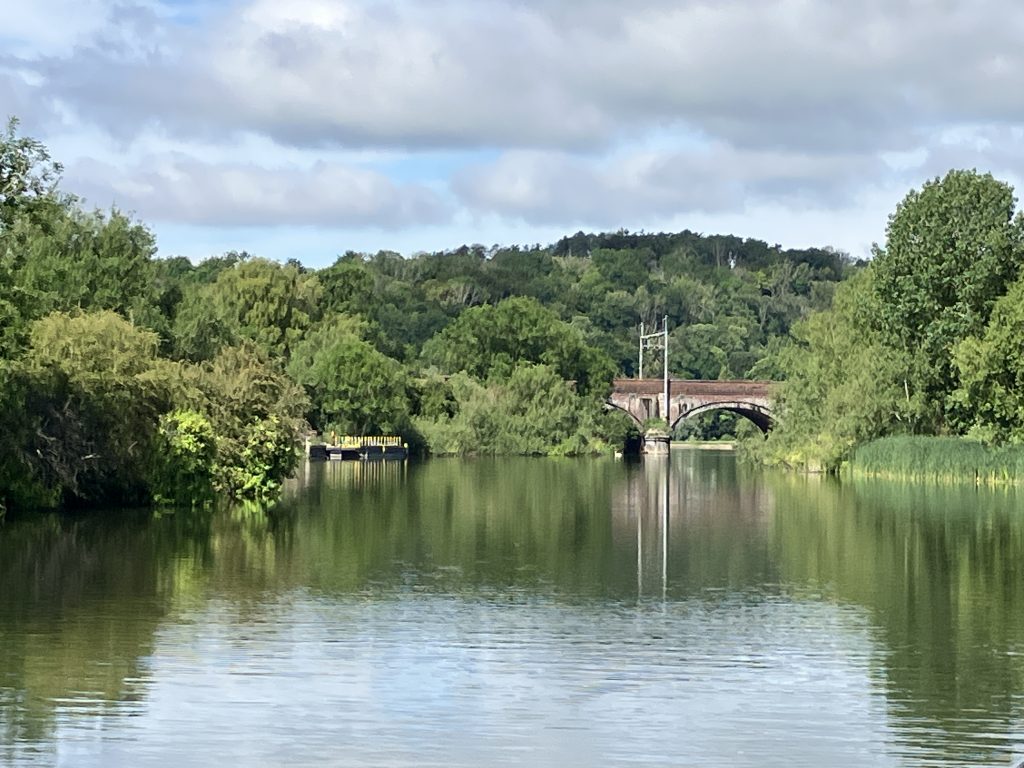
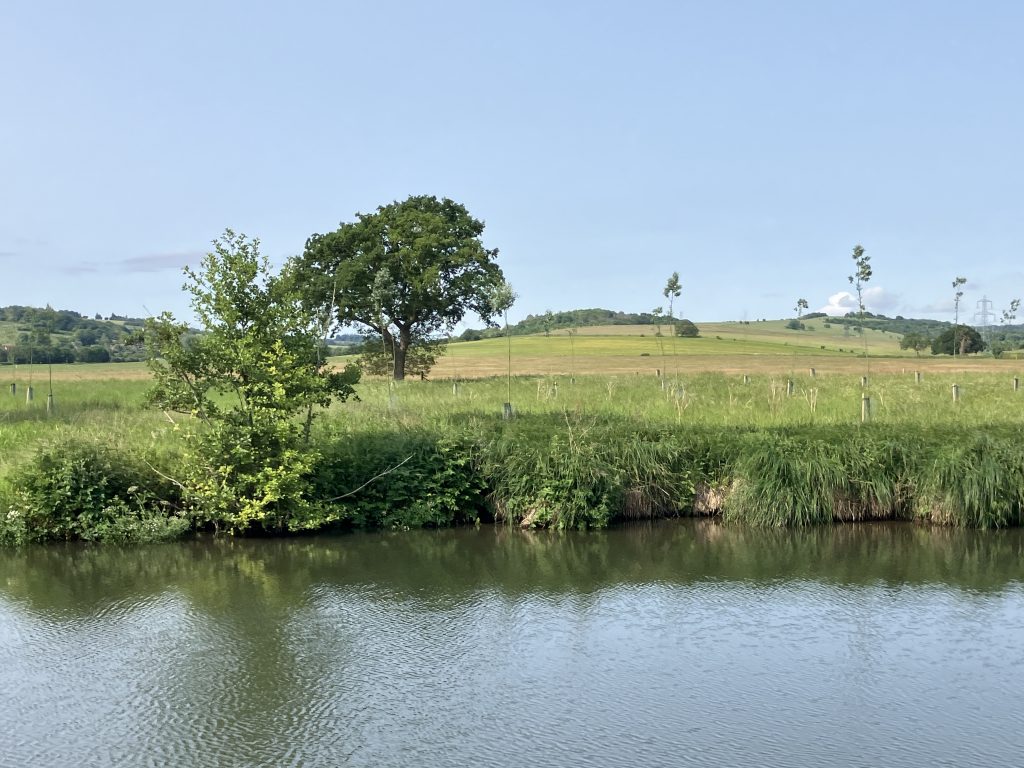
From Goring I continued on to Wallingford. On the way there is another magnificent Brunel railway bridge. I love these bridges as they were real engineering feats and I am always interested in industrial heritage. Moulsford bridge is a Skew Arch bridge, which means that it crosses the river at an angle. Look at the fascinating pattern of the bricks. This was done to strengthen the bridge as it crossed at an angle.
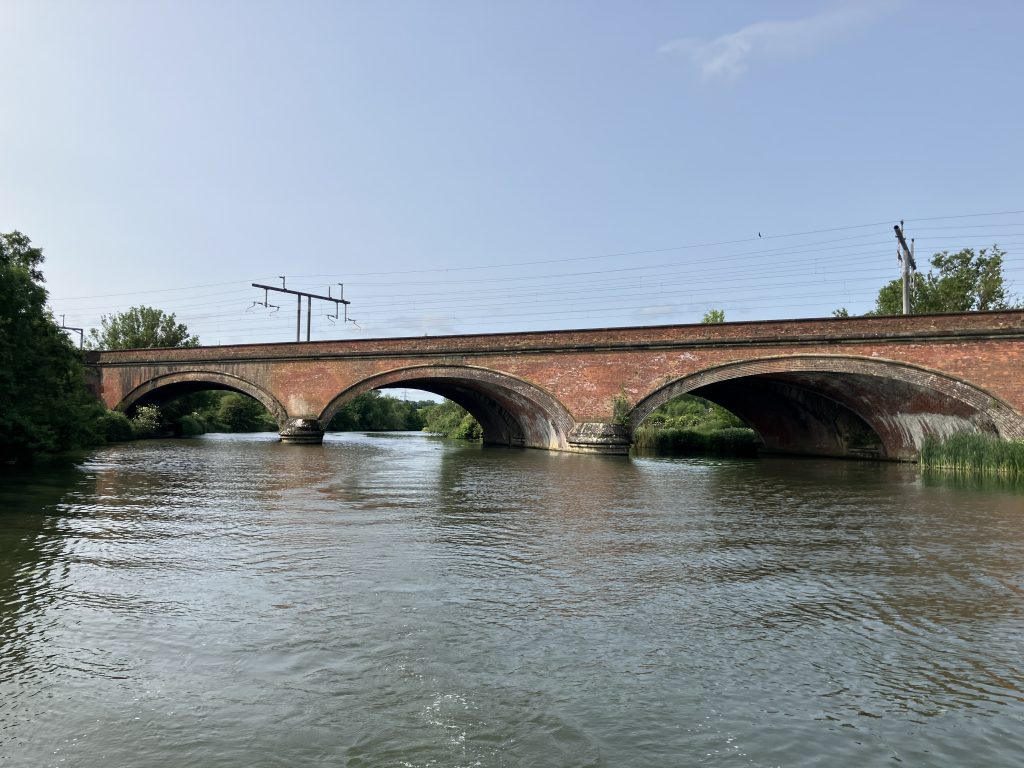
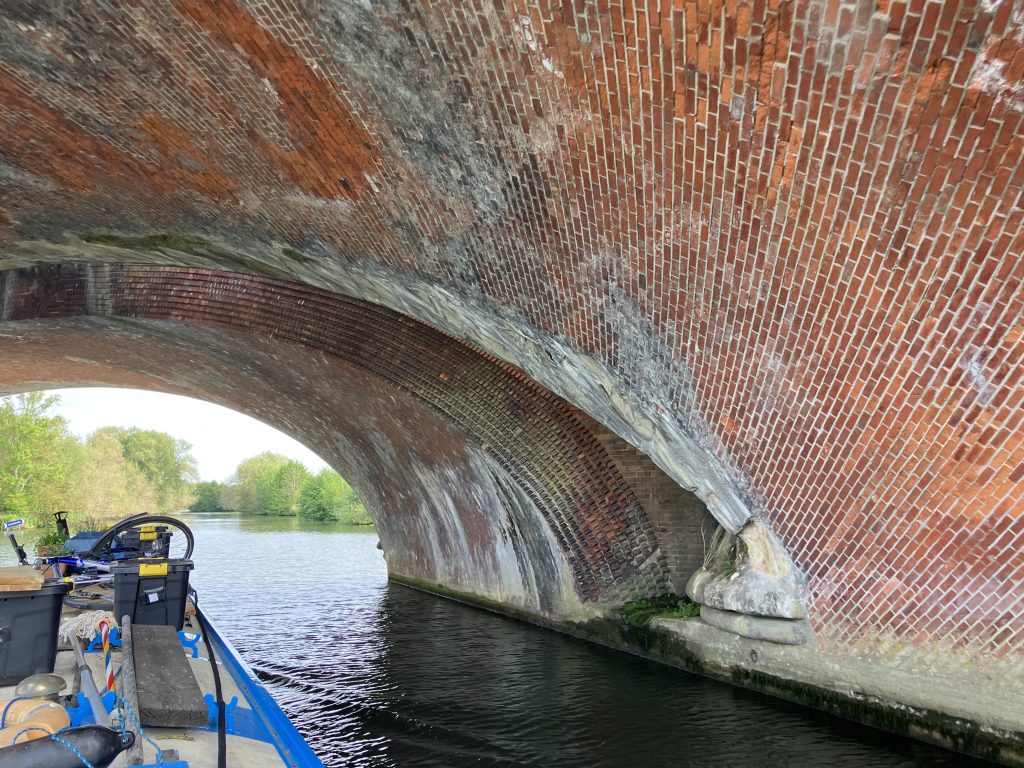
Wallingford has another fascinating bridge (I’ll stop now with the bridges, I promise), this time a medieval one. It has been modified over the centuries, but the oldest parts are from the 14th century. As Wallingford is a river ford, the water is very shallow around the bridge and a very popular swimming spot. Wallingford is a lovely town, where I spent a few days again to work.
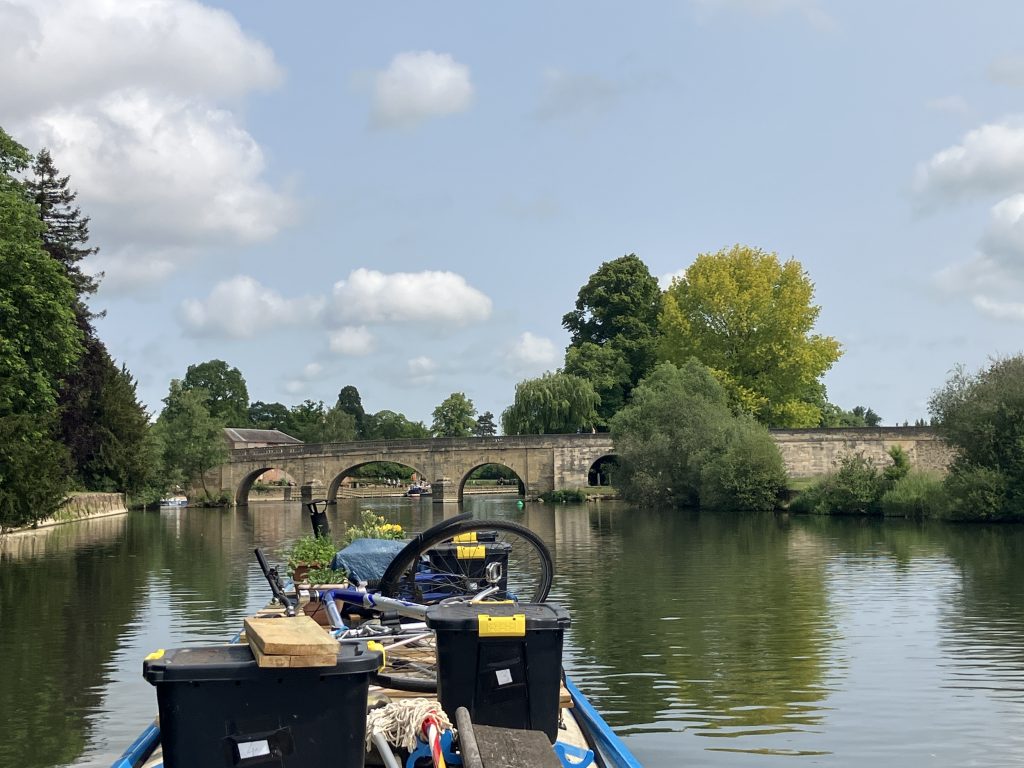
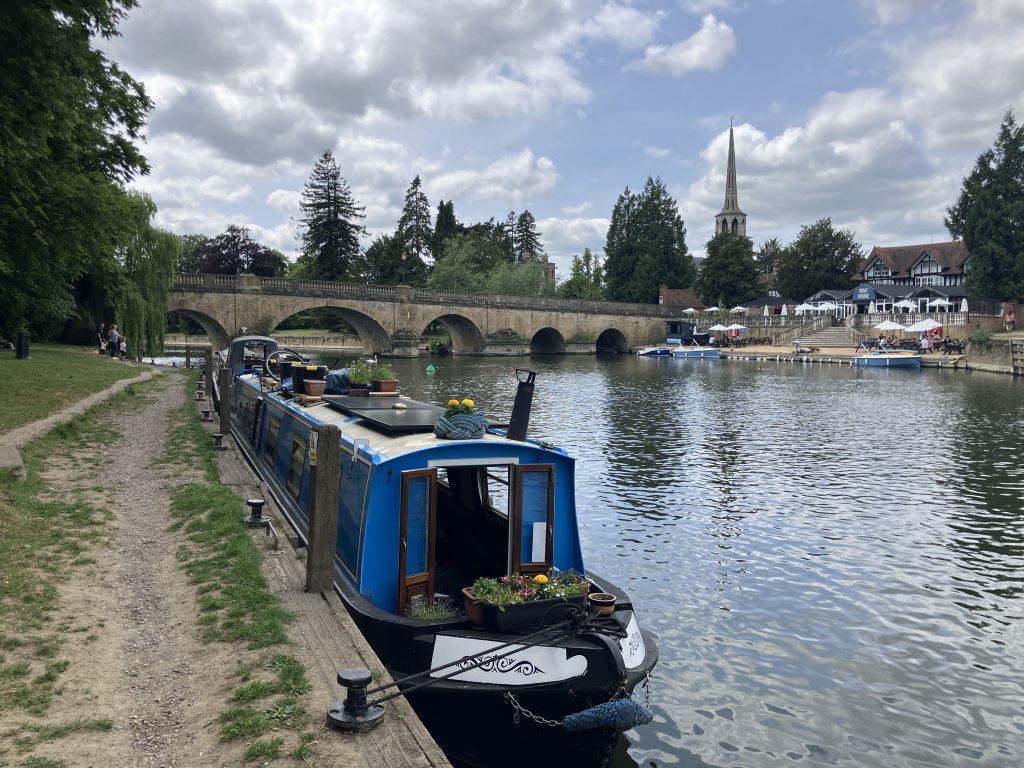
And last but not least a little quiz: have a guess what these spontaneous little seedlings are.
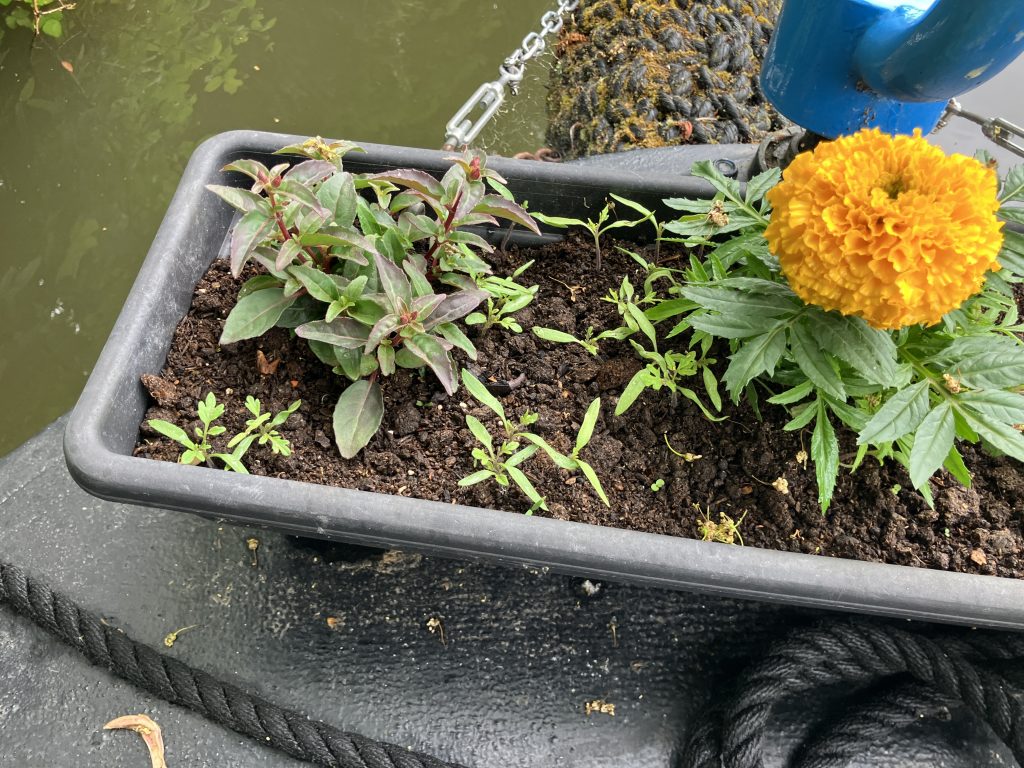
The answer is: I am using my fully composted toilet contents in my flower pots. It is amazing compost! These are little tomato seedlings and you can guess where they came from. They are amazingly resilient and pop up everywhere even in the dark compost bins.
I have planted out two seedlings and will see how they go. Last year’s attempt was not very convincing, but maybe I can do better.
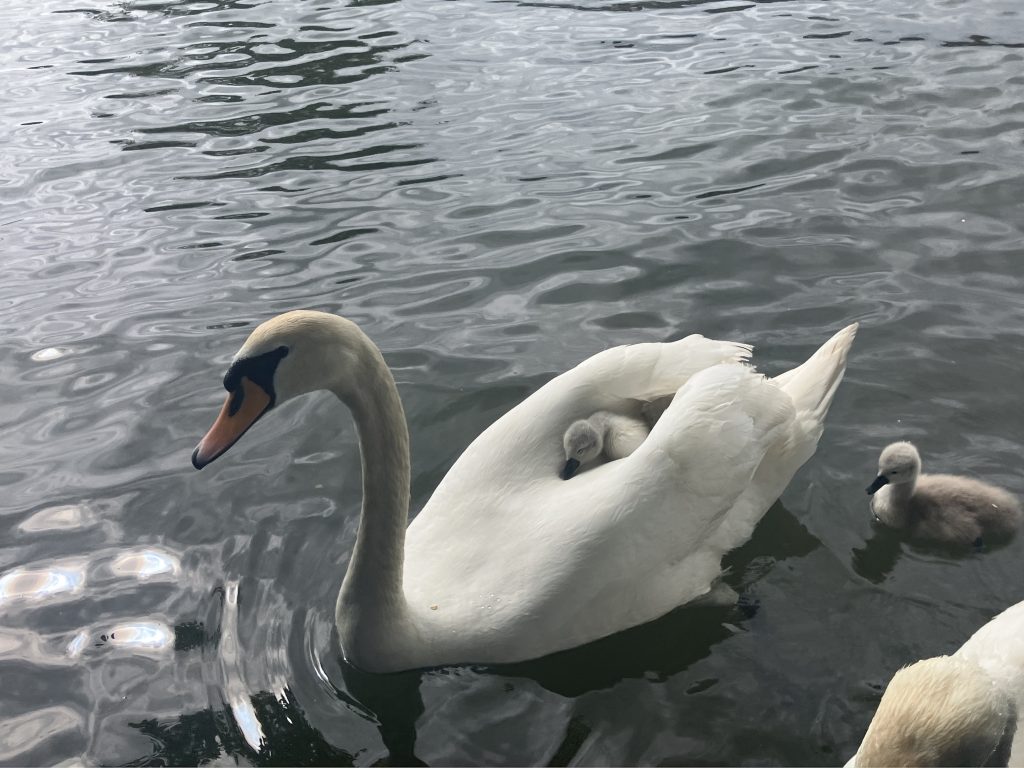
Hi Kerstin. How delightful to read your experiences on a part of the world I know so well! I am glad you have been enjoying Wallingford, where my parents had a long and happy retirement. There are 3-weekly chamber music concerts in St Peter’s Church by the Thames, if you coincide with them
Glad you like the bridges! Sorry about the entitled cruiser folk!
Vielen Dank, Kerstin. Wunderschön!
I expect continued tomato seedling updates 😉 Happy cruising x